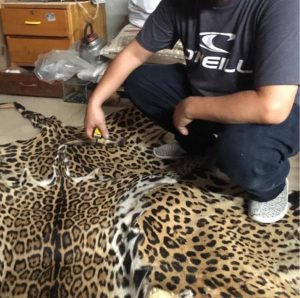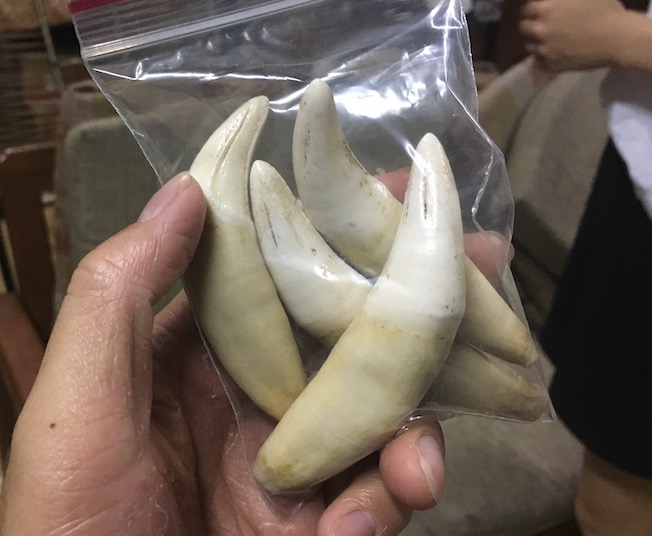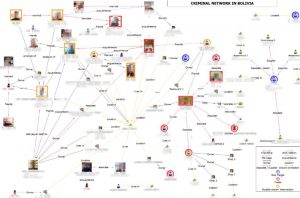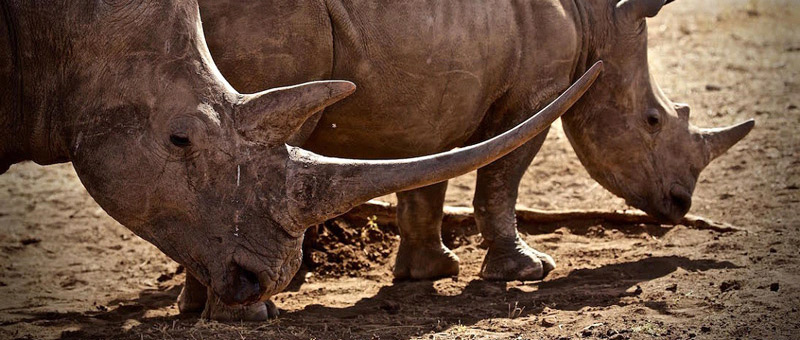Operation JAGUAR
Investigating the trafficking of jaguar parts from Latin America to Asia
Earth League International began investigating the trafficking of jaguar parts in 2017. Operation JAGUAR was launched in 2019, in collaboration with IUCN Netherlands and the International Fund for Animal Welfare (IFAW), and funded by the Dutch Postcode Lottery.
The goals of this multi-year operation were to address jaguar trafficking in Latin America, with a focus on the scale, nature, and dynamics of the trade. We initially focused on Bolivia, Peru, Ecuador and Suriname, guided by four strategic avenues:
- Systematically comprehend the scale, dynamics, and framework of jaguar trafficking and the convergence with other trafficking and crimes.
- Identify the main players and transational trafficking networks operating in the region.
- Enhance anti-poaching and counter-illegal wildlife trade measures within jaguar habitats.
- Enhance the proficiency of pivotal law enforcement and judicial agencies in countering wildlife trafficking.
- Amplify governmental and public emphasis on combatting wildlife trafficking.

Currently, the jaguar (Panthera onca) is listed on CITES Appendix I and is classified on the IUCN Red List as ‘near threatened,” with numbers continuing to decrease for a variety or reasons, including poaching and trafficking. Jaguar’s parts, mostly fangs and bones, are primarily destined for Chinese markets to be sold as a valid substitute for tiger parts. Chinese medicine has ascribed magical powers and medical properties to tiger bones and teeth for millennia. Thus, many Chinese refer to jaguars as “the American tiger.”
The operation is a pioneering long-term intelligence-gathering operation conducted by ELI to combat the trafficking of jaguars and their parts from South America to various international markets. This comprehensive operation not only targets the unlawful trade of jaguar products but also delves into the interconnected web of crimes that support and sustain this illicit activity.
To achieve this, we have been working on the following interventions:
- Collecting and analyzing information
- Improving protection of jaguar habitats
- Professionalizing law enforcement systems
- Mobilizing the public and politicians
Crime Convergence
A significant aspect of Operation JAGUAR is its focus on Environmental Crime Convergence—the intersection of various criminal activities that facilitate and enhance jaguar trafficking. The operation investigates how jaguar trafficking networks are intertwined with other illicit activities, including the trafficking of other wildlife products, such as shark fins, and serious crimes like money laundering, human smuggling, and corruption. ELI’s operation unveiled a significant Convergence with the trafficking of other wildlife products, such as timber and seafood, and with other serious crimes, including money laundering and human smuggling.
Main Objectives
The primary aim of Operation JAGUAR is to identify and investigate the most significant jaguar traffickers and their transnational networks operating in the Americas. The operation seeks to:

- Map Trafficking Networks: Conduct detailed mapping of the networks involved in the international trade of jaguar parts and other wildlife products, including smuggling routes and methods.
- Identify Key Players: Find and investigate the most influential and high-ranking individuals within these trafficking organizations, including top transnational traffickers, middle-men and corrupt government officials.
- Investigate Multifaceted Crimes: Explore the connections between jaguar trafficking and other criminal activities such as wildlife smuggling, money laundering, drugs trafficking, and corruption.
- Disrupt Operations: Implement strategic interventions to disrupt and dismantle trafficking networks and their illegal supply chains.
- Enhance Law Enforcement Collaboration: Provide critical intelligence to law enforcement agencies to support prosecutions and enforcement actions.
- Strengthening Legal Frameworks: Informing policy-making and enhancing legal measures against wildlife trafficking.
Main Findings

ELI’s intelligence operation and investigation found that, in certain regions, international trafficking networks are driving the poaching and trafficking of jaguar parts. The persons identified by ELI have solid transnational networks that allow them to smuggle without major issues jaguar parts as well as every sort of illegal goods from South America to China. The goods are generally transported by plane, with individuals carrying them into pieces of luggage or on their bodies. Over 75 Persons of Interest implicated in jaguar trafficking have been identified. These individuals are part of intricately structured networks, often intertwined with Chinese mafia syndicates that drive the procurement and trafficking of jaguar parts.
Our investigations have also highlighted the convergence of crimes, linking jaguar parts trafficking with the illicit trade of other wildlife products, such as shark fins, as well as criminal activities like money laundering, human trafficking, and collaboration with drug traffickers.
Public Reports and Confidential Intelligence Briefs (CIBs)
We produced numerous Public Reports about this operation, including detailed analyses of work conducted in specific countries and a comprehensive final report on the entire operation. These publications provide a comprehensive overview of this intelligence-gathering operation aimed at combating jaguar trafficking from South America to Asia. Each report outlines the investigative and analytical methodologies employed, key findings on trafficking networks and their convergence with other criminal activities, and highlights the significant impact of the operation on disrupting illicit trade. By making this information publicly available, ELI aims to raise global awareness, foster international collaboration, and support ongoing efforts to protect jaguar populations and combat organized crime.
In addition to the public reports, Operation JAGUAR has produced numerous Confidential Intelligence Briefs (CIBs). These briefs were meticulously prepared by our analysts and shared with law enforcement and government authorities in Peru, Bolivia, the U.S. and the Netherlands. The CIBs include:
- Names and personal information of Key Traffickers and middle-men
- Network Mappings: Detailed charts and descriptions of transnational trafficking networks and their operations.
- Modus Operandi: Comprehensive analysis of the methods used by traffickers to move jaguar parts and other wildlife products
- Concrete Evidence: Photographic documentation, undercover footage, financial information, and other evidence gathered during the investigation
- Crime Convergence: Information on how trafficking networks are involved in human smuggling, money laundering, drugs trafficking, and corruption
In Bolivia, our collaboration with local law enforcement agencies led to the arrest of five jaguar traffickers in 2021, with additional individuals indicted in 2024.
Our findings were also presented to key stakeholders, including INTERPOL, UNODC, the Chair of the IUCN Species Survival Commission, and the CITES Secretariat.
Download the report here: Operation-Jaguar-final-report_March-2023
ELI extends its heartfelt thanks to the Dutch Postcode Lottery and IUCN Netherlands for their generous funding of this project, which has been instrumental in the success of Operation JAGUAR.


